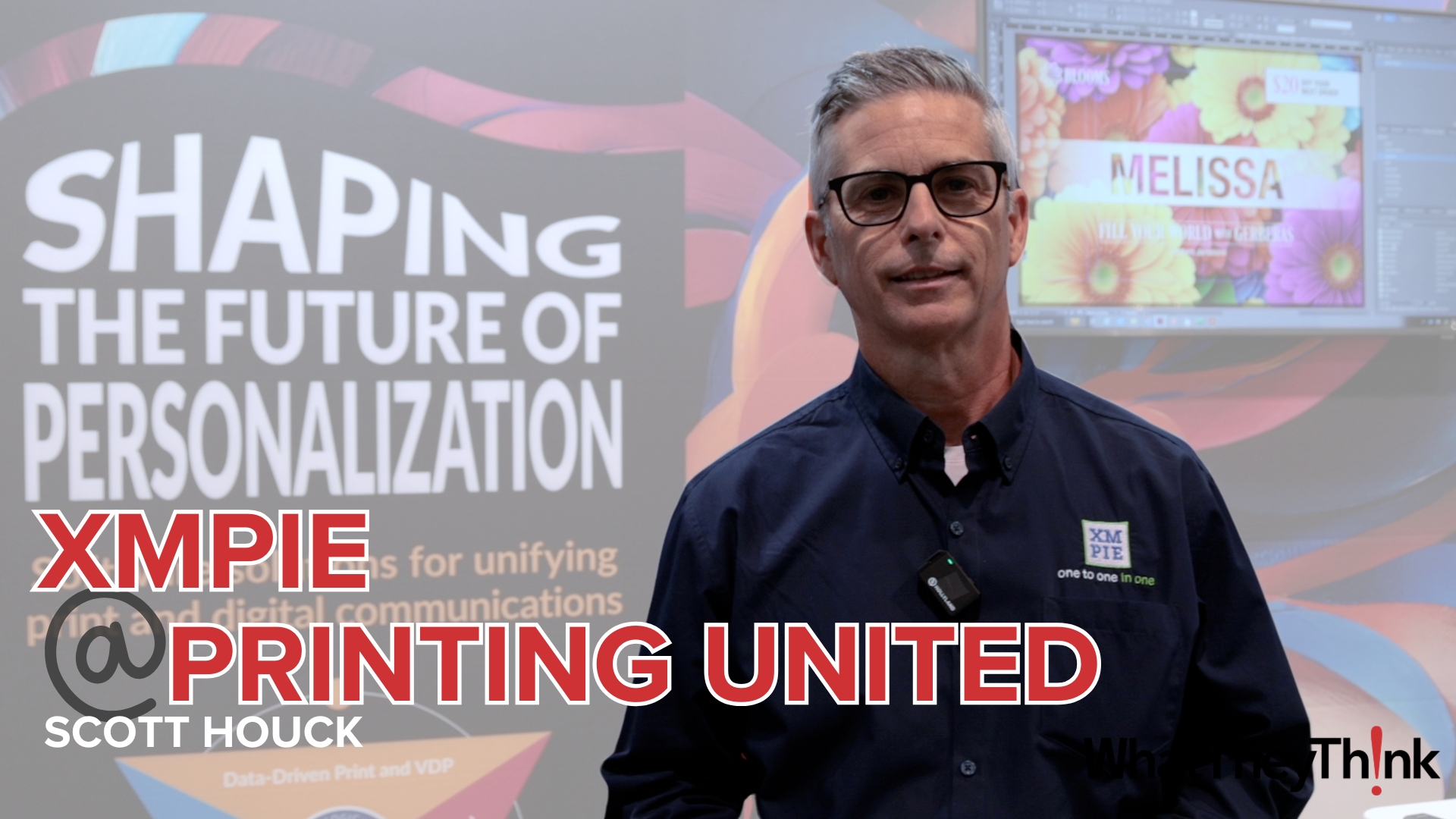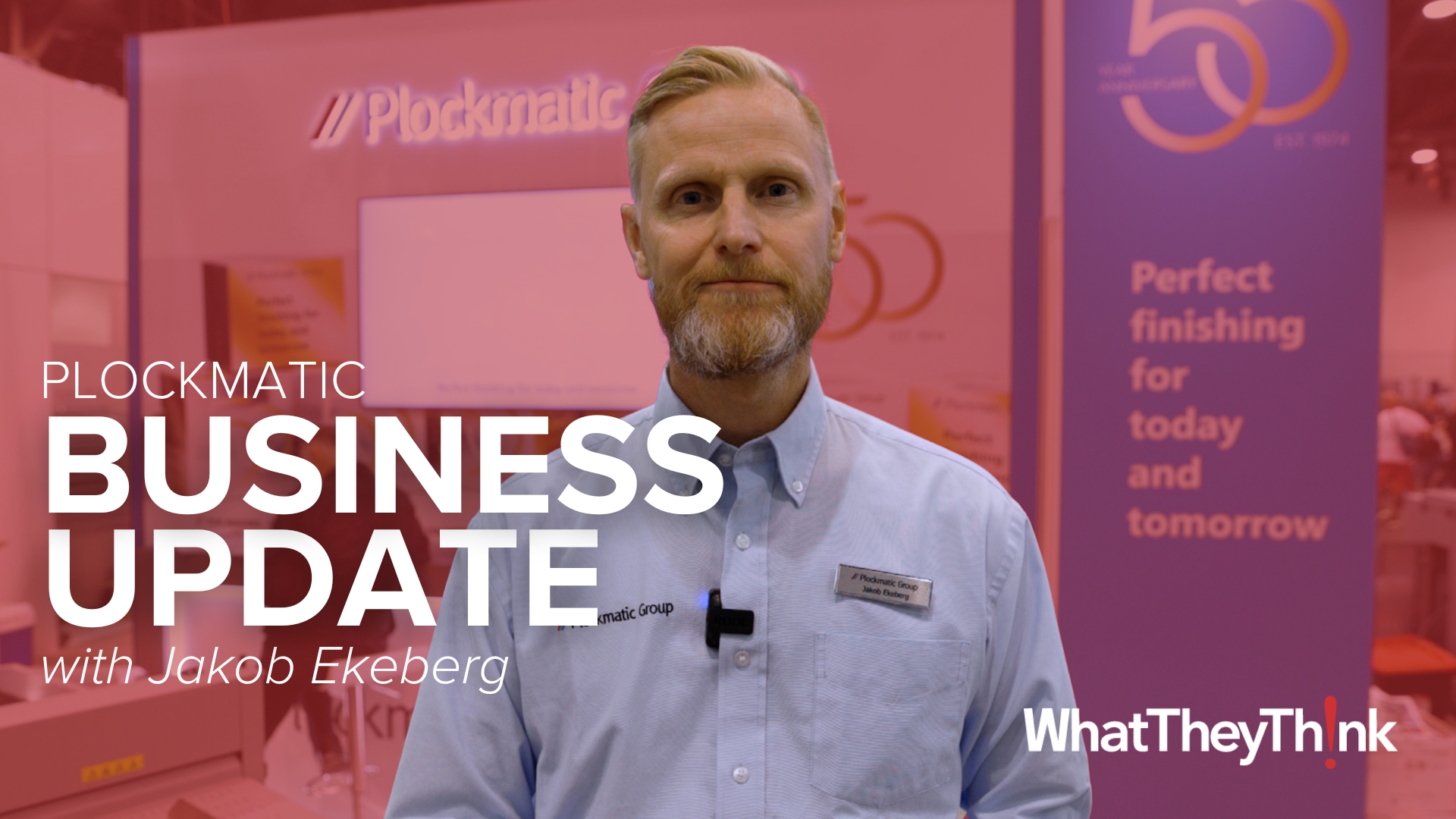This issue, we spoke with William Troxil, who served the past ten years as President of the Industrial Print and Production Print Business at Konica Minolta Business Solutions and just promoted to a new and expanded role of Advisor to the CEO, about the company’s finishing and embellishment offerings, the relationships they have with their customers, and how the industrial print business is the growth area for the industry.
WhatTheyThink: Let’s start with a little bit about Konica Minolta’s product offerings in the finishing and embellishing space.
William Troxil: We invested in a French company named MGI. With the CPCs in the toner business dropping precipitously and the number of machines shrinking, our offering has been to differentiate ourselves and provide added value to print because basic black-and-white print commercial printers can’t make any money anymore. We came up with a reasonable solution and a reasonable return on investment to create a market that had been highly centralized—embellishments in a few places on some high-end offset-type press technology—and are now redistributing the ability to embellish print from the $3 to $5 million printer all the way up to the largest commercial print and packaging companies, depending who and what they are. In our inkjet business, we now have 42% market share in B2 size digital cut sheet. As a result, the likely candidates are for the high-end embellishments. And about 30% of our inkjet presses are now attached to our digital embellishment solutions and that number keeps growing. It could be 40% and then 50%. Those are the printing companies that are going to have a competitive advantage because customer buying habits have changed and design has changed. So the added value of that print increases—such as mail responses from 2% to 3%, up to over 6 to 8%. From financing offers, credit cards with banks, to casino marketing, and all kinds of vertical marketing—their response rates are up to 3X greater because of embellishment. And we’ve been able to come up with an affordable solution—and on the toner side as well—where the $3 to $5 million commercial printer can now afford a reasonable return on investment of less than 24 months. We show them how to create the marketing and the business development activities to add value to print to keep the customers they have as well as gain new customers. And we’re showing them how to build that business while supporting them with knowledge and tools.
WTT: So what do you find are printer's biggest challenges in successfully adding these types of applications and capabilities?
WT: Well, I think one is their designers. The creative designers are used to developing their output around toner, color toner and black-and-white toner, and that’s it. It’s expertise that’s needed from a design standpoint—from the design community or hiring people that have the design expertise to be more creative and come up with new and better ideas, as customer buying habits have changed. The other thing is that they have to have expert advice—so we’ve got to be a trusted advisor. And that’s why we are doing so well. 72% of the time when a customer calls us, they’re looking for advice, not a service call on something like a copier. So we’ve got to be a trusted advisor and a safe decision for them to make. That’s what we’ve built our organization around, so people have turned to us. We need to give them that advice because labor markets are so tight that they can’t develop those people overnight.
WTT: What does some of that advice consist of? What are some of the specific pieces of advice or things you're doing to help build that market?
WT: There are a lot of different substrates out there now. People aren’t printing on bond paper or plain paper. They’re printing on highly sophisticated substrates like films for backlit signs. If you get a piece of mail, the printed image of, say, a golf ball will feel like a golf ball. So we’ve got to help them with all that. The substrates and how to put it into the workflow of their plant are where we give them advice. We’re not selling stuff into an office. We help them with their workflow, ROI and give them the advice they need, and we have the remote diagnostics technology to keep them going remotely versus the old model of, “well, you got a copier and we hope you call for service all the time.” It’s a whole different business model. The other thing is, it’s a business, not a product. We’ve been able to have built a business versus developed a distribution strategy. Customers trust us and we’re giving them good advice. I always say selling solutions is kind of like, you’ve been going to your dentist for the last 10 or 20 years, but would you ever let your dentist operate on your head? The answer’s no. But if the person comes to you that’s operating on your head says, “I’m gonna pull out your teeth,” you’d say yes. (Laughs.) That’s the difference.
We have several hundred users now and, forecasted, this is a growth engine for our company. So we’re investing in this industrial print space and the key will be who can execute the best.
WTT: Getting back to customers, what do you see as effective ways for printers to market and promote these embellishment capabilities once they’ve got them up and running?
WT: We give them the key vertical markets. We’ve got a business development package that we implement after installation, and we’re providing our customers with the expertise on what type of vertical markets are demanding high-end print, and we show them how to sell. We cite the fact that marketing response rates and things like that are all 3X or more and you can get a 10%, 12%, and 15% return versus 5% and 6%. We’ve got a business development package in which our people live with the installation for three to six months. We’re on-site providing the expertise to help train their people and multiple departments. And that, therefore, becomes a safe decision for the printer—or whomever. It’s also effective for in-plants. It’s not just commercial printers, but universities, insurance companies, anyone that is protecting or wanting to differentiate their brand. They value the brand so much they want to make sure that that brand is protected and is perfect, especially if there’s a family name on it.
WTT: So it’s a whole different decision-making process.
WT: Usually you’re in front of the executives as owners of the companies that you’re marketing to. So then you become very sticky. The strategy is, replacing your copier is easy. Replacing someone that’s giving you trusted advice and helping you build your business isn’t. So you’ve got a stable and profitable customer base. But we’re partners. We’re forming partnerships, not just taking sales orders.
WTT: Pulling back a little bit, what are some of the major challenges that your customers are wrestling with in general, not just in terms of finishing and embellishment, and how are you serving as advisors for those types of problems?
WT: They’re all struggling with labor. And if we can show them that we can have one person run three presses and that’s more of a person that’s got casual computer skills before versus someone that can fix a press. So if we can give them the remote diagnostics that they need, then we’re able to fit into their workflow and their fixed costs don’t go up because they have to hire more people and they can’t find them. We take that tight labor market right out of the equation. It’s no longer, oh, you have to hire someone who knows how to run this equipment. You have to hire someone willing to learn to run this equipment. So we’re taking the pressure off the shortage of labor.
WTT: Is there anything else you’d like to add?
WT: If you look at everybody’s presentations to their boards, to their management teams, to their stakeholders, they are all racing to the industrial print segment. And the manufacturer who can execute the best will be the big winner going forward. We all know office printer/office copier business volumes are down. Our print volumes are down in production print with toner because there aren’t a lot of black-and-white toner prints being made anymore. We know the trends, so we have to outrun them by developing this industrial print business as a business. That’s the key thing that we’ve done to be successful and it’s the fastest growing, highest margin business we have now.















Discussion
Only verified members can comment.